Andrei Ryabushkin (1861-1904)
Get a Ryabushkin Certificate of Authenticity for your painting (COA) for your Ryabushkin drawing.
For all your Ryabushkin artworks you need a Certificate of Authenticity (COA) in order to sell, to insure or to donate for a tax deduction.
Getting a Ryabushkin Certificate of Authenticity (COA) is easy. Just send us photos and dimensions and tell us what you know about the origin or history of your Ryabushkin painting or drawing.
If you want to sell your Ryabushkin painting or drawing use our selling services. We offer Ryabushkin selling help, selling advice, private treaty sales and full brokerage.
We have been authenticating Ryabushkin and issuing certificates of authenticity since 2002. We are recognized Ryabushkin experts and Ryabushkin certified appraisers. We issue COAs and appraisals for all Ryabushkin artworks.
Our Ryabushkin paintings and drawings authentications are accepted and respected worldwide.
Each COA is backed by in-depth research and analysis authentication reports.
The Ryabushkin certificates of authenticity we issue are based on solid, reliable and fully referenced art investigations, authentication research, analytical work and forensic studies.
We are available to examine your Ryabushkin painting or drawing anywhere in the world.
You will generally receive your certificates of authenticity and authentication report within two weeks. Some complicated cases with difficult to research Ryabushkin paintings or drawings take longer.
Our clients include Ryabushkin collectors, investors, tax authorities, insurance adjusters, appraisers, valuers, auctioneers, Federal agencies and many law firms.
We perform Andrei Ryabushkin art authentication, appraisal, certificates of authenticity (COA), analysis, research, scientific tests, full art authentications. We will help you sell your Andrei Ryabushkin or we will sell it for you.

Andrei Ryabushkin was a Russian painter. His major works were devoted to life of ordinary Russians of 17th century. Ryabushkin was born in the village Stanichnaya sloboda, Borisoglebskiy uezd, Tambov gubernia in 1861. His father and brother were icon-painters, and he started to help them from his early childhood. At 14 years old he became an orphan. A student of Moscow School of painting, sculpturing and architecture A. Kh. Preobrazhensky, who used to spend the summer in the village, happened to see the boy’s drawings and was greatly impressed by them. He started to give him lessons and helped him to enter the Moscow School of Painting, Sculpture and Architecture. Ryabushkin was one of the youngest student of the school at all times.
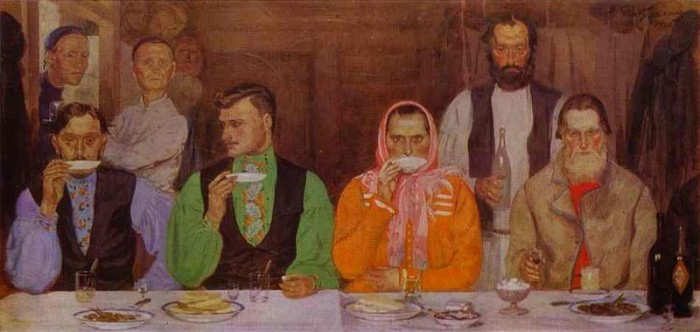
Ryabushkin stayed for 7 years (1875-82) in the Moscow School, learning from Vasily Perov and Illarion Pryanishnikov. His first large work Peasant Wedding was bought by Pavel Tretyakov in 1880. After the death of Vasiliy Perov, Ryabushkin moved to Saint Petersburg, in 1882, and entered the Imperial Academy of Arts, where he learned from Pavel Chistyakov. The classes soon disappointed him, however, and he began to spend more and more time either in the library of the Academy or sketching in the streets.
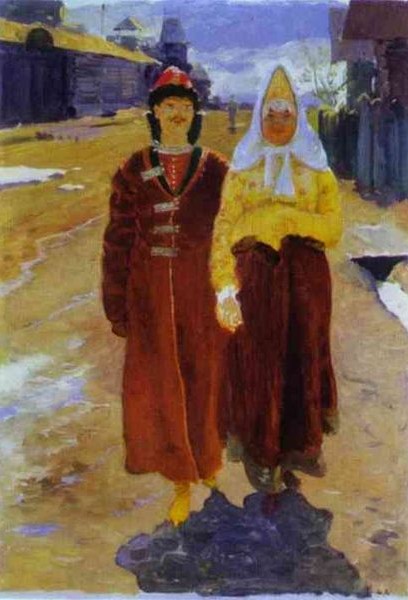
His studies at the Academy came to an end in 1892; he did not receive an award for his diploma work Descent from the Cross, as was expected, because he did not follow the approved project. But the work was so good that the President of the Academy, Grand Duke Vladimir Konstantinovich, provided Ryabushkin with a stipend for travel and studies abroad from his own means. Instead of going to Italy or Paris, Ryabushkin chose to make a tour of ancient Russian towns (Novgorod, Kiev, Moscow, Uglich, Yaroslavl). The inhabitants of them became his first models and his first critics. He studied the old architecture, items of folk crafts, old weapons, fabrics, tapestries, embroidery, icons, etc. He read ancient books, collected folklore.
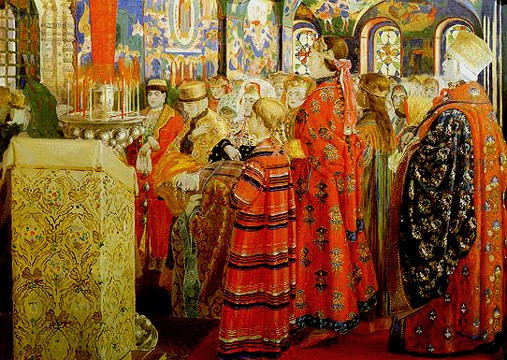
He took part in Peredvizhniki exhibitions in 1890, 1892 and 1894 but later broke with the movement. In the 1890-ies he lived and worked in the estate of his fiend V.F. Tymenev in town of Lubvino (Saint-Petersburg gubernia). In 1901 he built a studio in a village of Didvino close to Lubvino and the estate of his friend I. Belyaev.
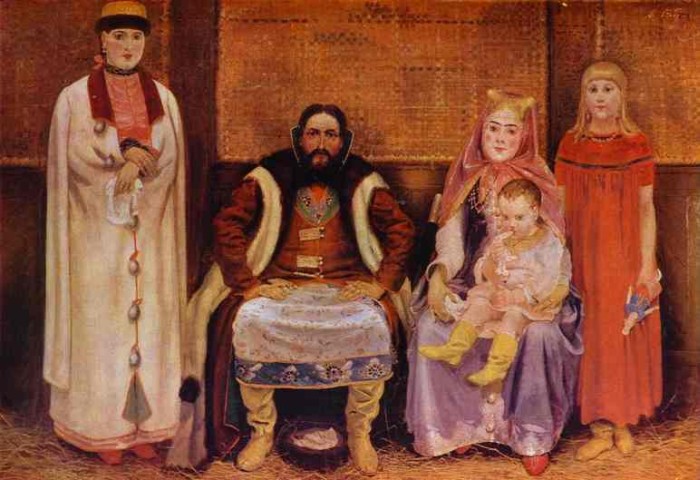
His paintings were mostly devoted to the XVII-th century. He also works on frecoes for Sofia Cathedral in Novgorod and mosaics for the Church of the Savior on Blood in Saint-Petersburg. There are 24 of his mosaics on the walls of Church of the Savior on Blood (17 inside and seven outside) (1897-1900). In the later 1900-ies he became interested in the life of contemporary Russian peasant (such paintings as Tea-Drinking and A Young Man Breaking into the Girls’ Dance).
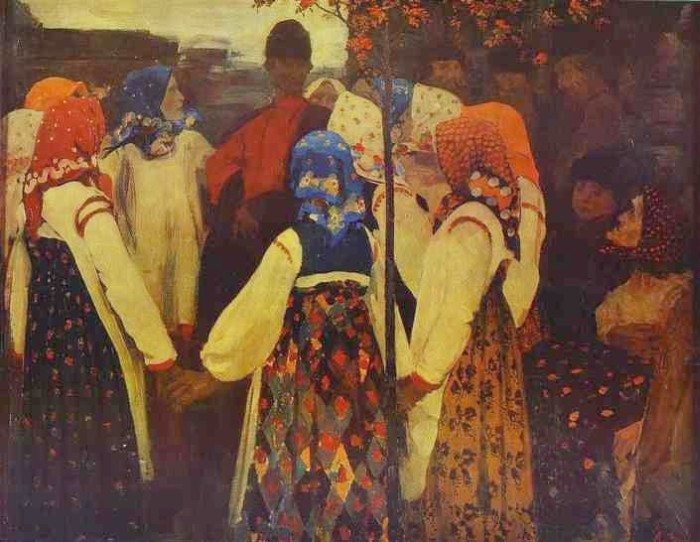
The deep study of history made his paintings very reliable, but they did not evoke any sympathy in his contemporaries. Unlike Vasily Surikov, who used the dramatic historical episodes as his subjects, Ryabushkin painted everyday life of XVIIth century. His works lack action, they do not depict social conflicts, as the democrats liked. On the other hand they are not so “beautiful” to reflect the tastes of the rich conservatives. Nobody knew where to place Ryabushkin’s paintings and just did not accept them.
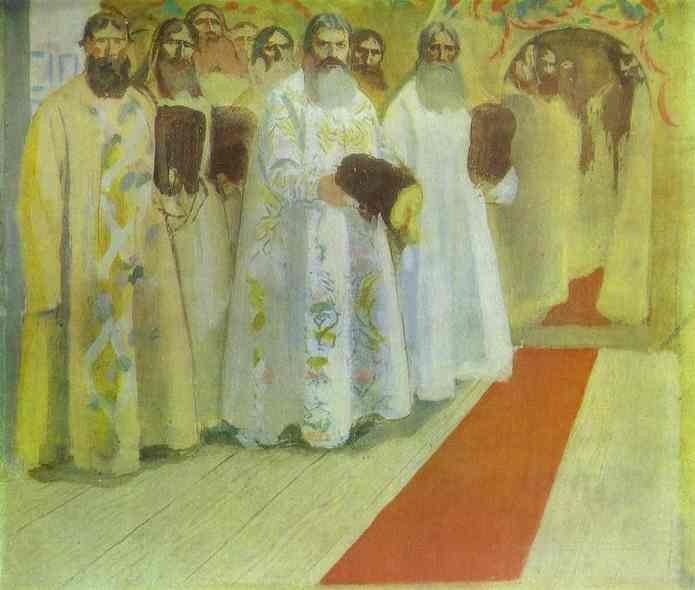
In 1903 Ryabushkin was diagnosed with tuberculosis. He went to Switzerland for treatment but it did not help. He died in his studio in Didvino on April 27, 1904. Still wondering about a 19th century Russian painting in your family collection? Contact us…it could be by Andrei Ryabushkin.
